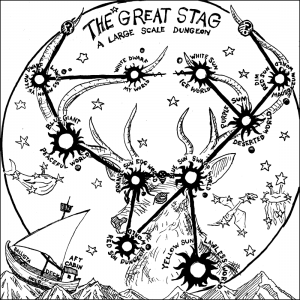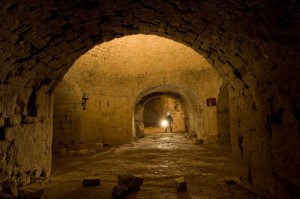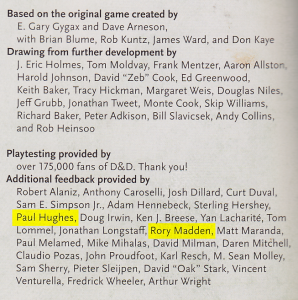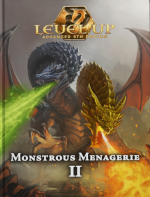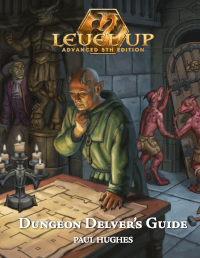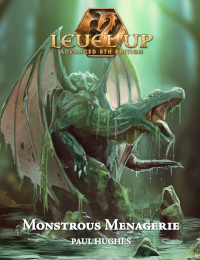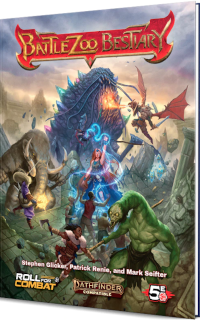Mike Shea has an interesting article about running mystery/investigation games. Running a mystery game is famously difficult, and Mike has a lot of great advice: don’t kill player involvement by dead-ending all their efforts. Don’t slavishly follow the letter of the module. Don’t bury the clues. And finally, change the mystery as needed.
If PCs seem to be spending all of their time in one line of investigation while the real answer lies somewhere completely different, we are well within our power and authority to move the clues. … Maybe NPCs begin to learn things they hadn’t known or the map is hidden in a completely different part of the mansion after all.
This last piece of DM advice is something which I’ve done many times before, and which makes total sense to me as a DM, but I’d like to add a note of caution as a player.
For a DM, it’s just good sense to rewrite the story; the players need never know, and everyone ends up having a better time. But as a player, I find myself quixotically kicking against this kind of good sense. As a player, I don’t want to solve a mystery because the DM moved the clues under my nose. On the other hand, I don’t want to waste a lot of time because the DM put the clues in the wrong place, either.
Here’s the thing: from my player’s perspective, sometimes it’s OK to move the clues and sometimes it’s not. Here’s my advice as a D&D player to DMs running mystery games:
Don’t let us players rewrite the mystery – unless our version is better
Even though you as the DM are constantly making up bits of the world for us, you are still capable of feeling suspension of disbelief yourself – and that’s important to maintain. At its best, DMing feels like channeling a world with a reality of its own. If the murder took place in the conservatory, it took place in the conservatory, even if we’re wasting our time investigating the billiard room – because, even though this statement sounds insane, “that’s how it really happened.” Once you’ve fixed something into the history of your game world, don’t excise it lightly. As a player, I want the game world to have reality and weight to it. I want to make some good choices and some bad choices, and look back with hindsight and know the difference. As a player, I want to take your world seriously, so make sure you do too.
There’s an exception to the “no rewrites” rule: one of us players might have a theory, or you might later come up with an idea, that’s better than your original plan. Now’s the time to rewrite history! The murder took place in the billiard room after all, because it makes more sense that way! Maybe I reminded you that Lord Wolfson loves to play billiards, so, now that you think of it, the billiards room would be a more logical place for the deadly confrontation. Retcon your story and change your plot, not for our convenience but because, now that you think of it, “that’s how it really happened.”
Honor our important choices, not our unimportant ones
Over the course of an investigation, PCs make a lot of significant choices. We might decide that the butler is on our side, and anyone who disagrees with the butler’s testimony is clearly lying. We might gamble on a risky Intimidation attempt, which might anger a key suspect or elicit new clues. The paladin might even decide that it’s dishonorable to read a gentleman’s letters, and burn a lot of key evidence unread. As a DM, you should honor those big choices, even if they make the investigation much easier or harder than you expected.
On the other hand, we also make a lot of insignificant choices. If you ask us which guest bedroom we are searching, we might say, “Uuh… the first one.” We might never visit the greenhouse because you forgot to mention to us that there’s a greenhouse. These are non-choices. Feel free to move the clue from the third to the first guest bedroom, or from the greenhouse to the ballroom.
Don’t figure out all the details beforehand
Let’s say the manor has 20 rooms and there are three important clues. Do we poor players really have to grind our way through a search of up to 17 meaningless rooms before we find a clue?
Here’s a reality-bending trick that doesn’t get my player hackles up:
Leave a lot of investigation details vague. Maybe you’ve decided that the chambermaid has a clue. You don’t need to key the chambermaid on the map. She might be in the second room we investigate, or the first, according to the dictates of pacing.
Maybe you haven’t thought at all about what’s in the stables, or what’s in town. If we investigate the stables, or start interrogating every shop owner in town, you as DM have carte blanche to make up clues: the more clues the better. It’s fine that these clues didn’t exist until we looked for them, because you’re not rewriting the mystery for us; you’re just filling in blank spaces in the map. That’s exactly what we expect from our DM.
So our group decides to search the stables, for which you prepared nothing. OK, you think, what’s in the stables? Let’s see, the victim arrived at the manor last night, so it makes sense that there’s an extra horse in the stables. And the stablehand would have seen the victim, and fed the horse. What’s in the saddlebags? Maybe a letter from Lord Wolfson to the victim? Maybe you roll a die to see whether that letter exists. Go ahead, you’re the DM.
What’s in town? Maybe we notice that the inn is called “The Wolf’s Arms.” “That must have some connection to Lord Wolfson,” I say, and we start coming up with a theory implicating the landlord. But the landlord wasn’t involved, and you as DM don’t need to retroactively involve him. Sometimes we’ll hit dead ends, and that’s OK.
provide interesting dead ends
Just as not every dead end in a dungeon has a secret door, not every area in an investigation yields a clue. Sometimes there are areas that don’t further the investigation.
But remember, you’re the DM of a living world, not just a mystery puzzle. Every area in the world can be interesting, even the places that have nothing to do with the mystery.
If you’re running a one-shot and trying to shepherd it to its conclusion by 10 PM, you might just want to say “You investigate the Wolf’s Arms Inn and find nothing to connect it to the murder.” But if you’re running a long-term campaign with no time pressure, then offer us a chance at some interesting new decisions: a fight, a quest – even a new mystery. Hey, we might find the second mystery more engaging than the first.
This might seem like a lot of improv pressure at the game table. After spending hours developing a mystery adventure, you’re supposed to come up with a new mystery, on the spot, in the, what, thirty seconds you have to think while we chatter about our crackpot innkeeper-did-it theory? Well, keep in mind you don’t need to come up with a solution to a new mystery right away, just a premise. And don’t worry, thirty seconds should be plenty of time.
To test this theory, I brought up the stopwatch feature on my phone. Let’s say the PCs start poking around in the Wolf’s Arms inn, which you haven’t prepared at all. I’m giving myself 30 seconds to come up with and develop a new tavern-based mystery as far as I can. At the end of the 30 seconds, I’ll write down what I come up with. I’ll try to do this four or five times.
The innkeeper doesn’t know anything about the murder, but….. three, two, one, go!
When lone foreigners come to the inn, the innkeeper invites them into the wine cellar, kills them, and pickles them in wine. When he has collected six pickled people, he ships them on a cart up north. Right before the PCs come in, the innkeeper spotted a potential victim in the common room.
The inn is filled with smuggler thugs, waiting to make a pickup of, say, silks. If the PCs come in with full bags of loot, they’re likely to mistake the PCs for their contacts. Otherwise, they’ll want to size the PCs up and figure out what their angle is.
The innkeeper is a vampire. The bartender is a brand-new vampire spawn just learning the ropes, and the innkeeper is parentally anxious about the bartender’s fledgling abilities.
The inn is used for a Hellfire Club of sinister and decadent nobles, and there’s a secret room filled with incriminating evidence. The innkeeper will act perfectly normal at first, but if the PCs seem too inquisitive on any subject, the innkeeper will assume that they’re onto the club and get nervous.
One of the rooms has a ghost, so the innkeeper will claim that the inn is full even though the PCs can clearly count four rooms and only three NPC parties. One of the stable stalls is similarly off-limits, haunted with the ghost’s spectral horse.
OK, one thing I noticed from this exercise: in the first 10 seconds, I came up with a trite adventure hook – more of a trope than a mystery. Any twists were generated in the last 20 seconds. So while DMing down a dead end, tune out player chatter and give yourself the luxury of a full 30 seconds, not 10 seconds, to decide what’s going on.
By the way, this is a fun home game! Try it yourself, using a stopwatch and any of the following red herrings. Come up with the seed of an unrelated new adventure. 30 seconds each!
The innkeeper doesn’t know anything about the murder, but…
The jeweler who bought the signet ring has never seen the victim before or since, but…
The town guards didn’t investigate the screams at the manor house because…
Oops! The DM forgot to come up with an alibi for Lord Wolfson’s wife. She was away from home the whole time because…

